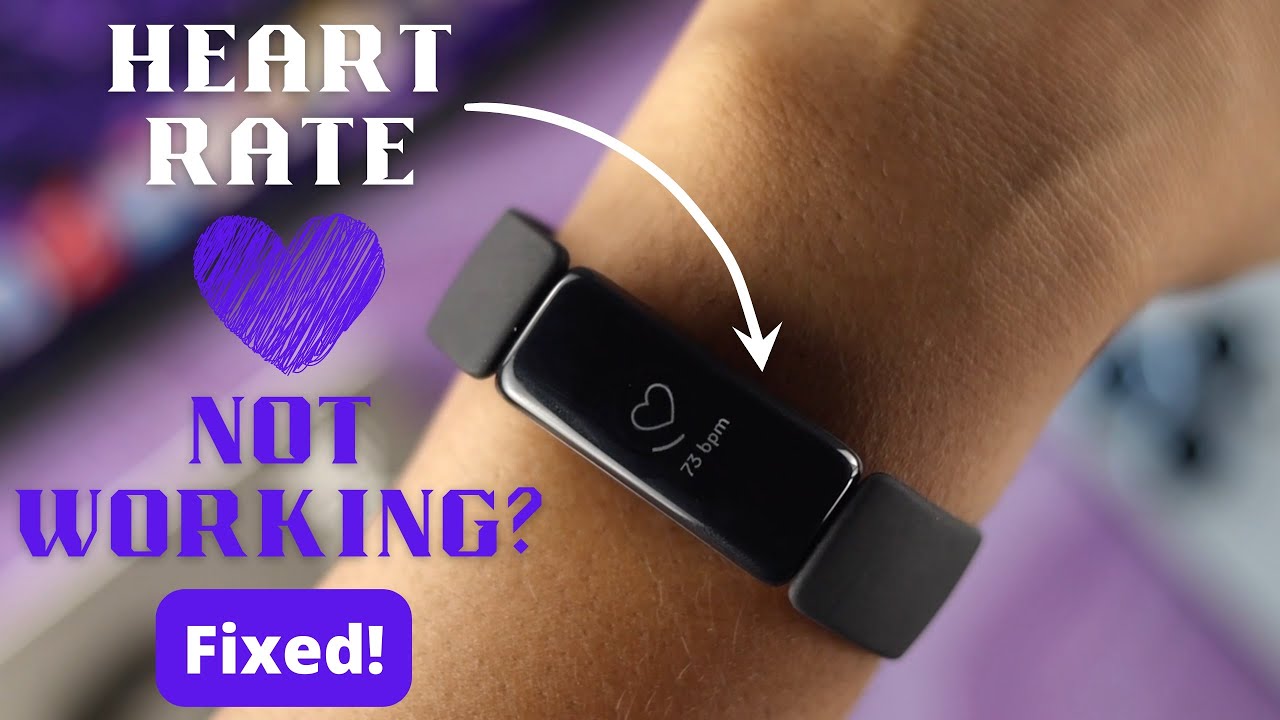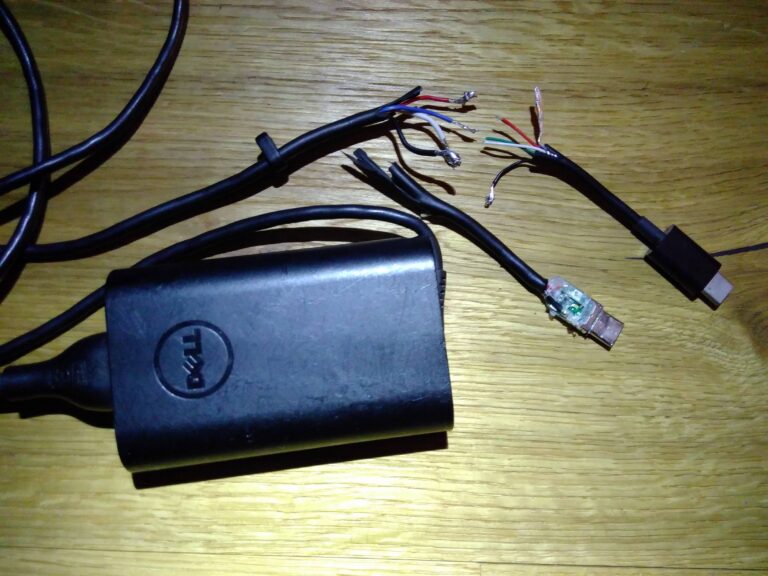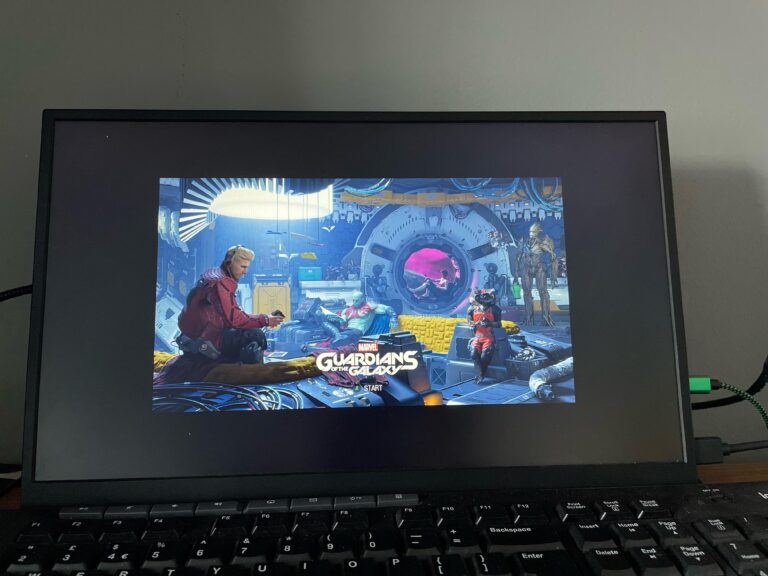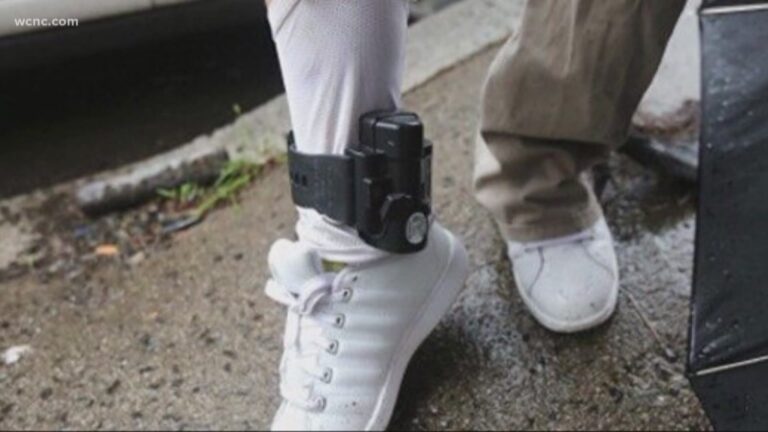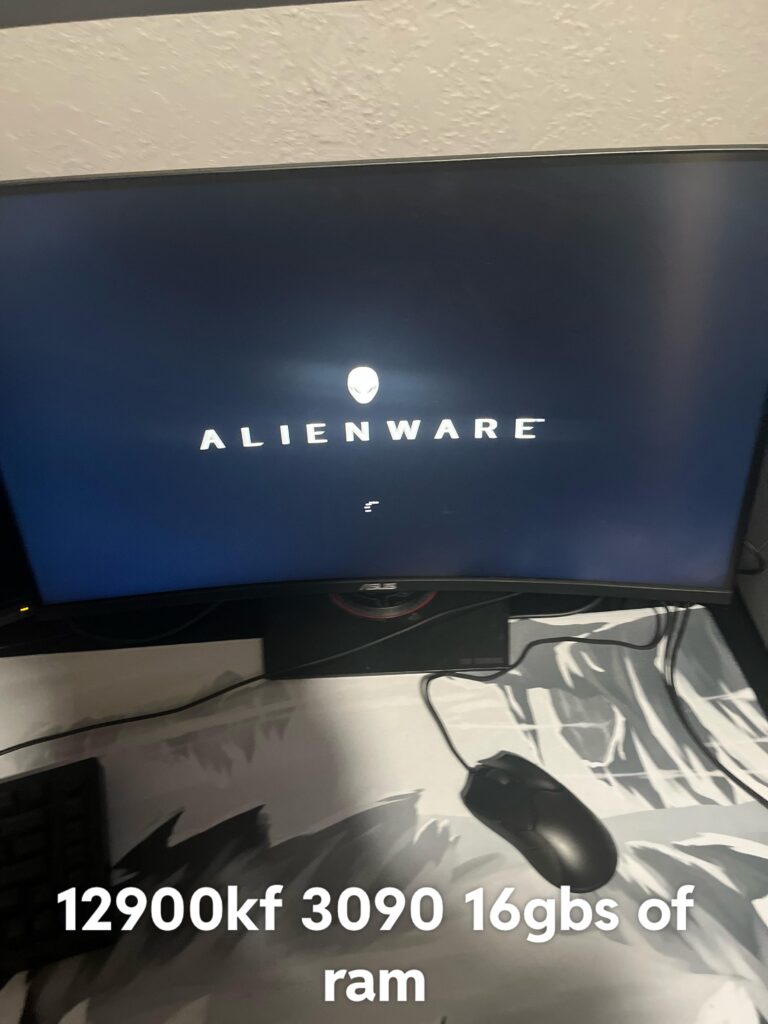Heart Rate Monitor Not Working on Fitbit: Troubleshooting Solutions
If your Fitbit heart rate monitor is not working, make sure heart rate tracking is turned on in the Settings app on your device and check if you’re wearing the tracker correctly. Clearing user data and syncing your device may also resolve the issue.
Ensure that the heart rate setting is not turned off and try changing the setting from Auto to On or On to Auto. Inaccurate readings can be caused by loose-fitting accessory bands, so it’s recommended to use the band that came with your device.
Additionally, make sure your device’s firmware is up-to-date, clean the sensor and belt properly, and ensure that the monitor is tight but comfortable around your chest.
Understanding Fitbit Heart Rate Monitoring
Having trouble with your Fitbit heart rate monitor? Make sure heart-rate tracking is turned on in the Settings app and that you’re wearing the tracker correctly. If the issue persists, try changing the heart rate setting and syncing your device.
### Understanding Fitbit Heart Rate Monitoring H3: Brief on how Fitbit tracks heart rate Fitbit uses a combination of optical sensors and complex algorithms to track your heart rate accurately. The optical sensors in the device monitor the blood flow in your wrist, capturing changes in blood volume to measure your heart rate. These sensors use LED lights to illuminate your skin and photodiodes to detect the amount of light reflected back. Fitbit then analyzes this data to calculate your heart rate. H3: Importance of accurate heart rate data for fitness tracking Accurate heart rate data is crucial for effective fitness tracking with Fitbit. Your heart rate provides insights into your activity levels, intensity, and overall cardiovascular health. It helps you monitor your exertion, optimize your workout intensity, and track your progress towards your fitness goals. By accurately measuring your heart rate, Fitbit can provide more precise calorie burn estimates and offer personalized recommendations. Ensuring that your Fitbit heart rate monitor is working properly is essential for receiving accurate data. Several factors can affect the heart rate reading on your device. These include loose-fitting accessory bands, incorrect placement of the tracker, or incorrect heart rate settings. To troubleshoot heart rate monitor issues, follow these steps: 1. Check heart-rate tracking settings: Ensure that heart-rate tracking is turned on in the Settings app on your Fitbit device. Swipe down from the clock face to access the settings and confirm that the heart rate tracking feature is activated. 2. Properly wear your tracker: Make sure you are wearing your Fitbit tracker correctly. Adjust its position on your wrist, either by moving it higher or lower or by tightening or loosening the band. The tracker should fit snugly but comfortably for accurate heart rate readings. 3. Use the recommended band: Fitbit recommends using the band that came with your device for optimum heart rate tracking performance. Certain accessory bands may affect the accuracy of heart rate readings, especially if they are loose-fitting. 4. Try changing heart rate settings: If the heart rate monitor is still not working, try changing the heart rate setting on your Fitbit device. You can toggle between Auto and On settings or On and Off settings, depending on your device model. Sync your device after changing the settings to ensure they are applied. 5. Clear user data: If none of the above steps resolve the issue, you can try clearing user data on your Fitbit device. Go to the Settings app on your device and select the option to clear user data. Remember to sync your device before clearing the data and set it up again afterwards. By following these troubleshooting steps, you can ensure that your Fitbit heart rate monitor is working correctly and providing accurate heart rate data for your fitness tracking needs. Remember to keep your device’s firmware up-to-date and clean the heart rate monitor regularly for optimal performance. Don’t let heart rate monitor issues hold you back from achieving your fitness goals. Take the necessary steps to troubleshoot and resolve any problems, and enjoy uninterrupted heart rate tracking with your Fitbit device.Common Issues With Fitbit Heart Rate Monitors
If your Fitbit heart rate monitor is not working, there are a few troubleshooting steps you can try. First, make sure heart rate tracking is turned on in the settings app on your tracker. Check that you are wearing the tracker correctly, adjusting its position on your wrist or tightening/loosening the band.
If these steps don’t fix the issue, try clearing user data or changing the heart rate setting and syncing your device.
Hardware Malfunctions
If your Fitbit heart rate monitor is not working properly, one of the potential causes could be a hardware malfunction. Sometimes, the internal components or sensors that track your heart rate may encounter issues that prevent accurate readings. To troubleshoot this, you can try resetting your Fitbit device by clearing user data. To do this, go to the “Settings” app on your Fitbit device and select “Clear user data.” Remember to sync your device before performing this step.
Software Glitches
Software glitches can also affect the performance of your Fitbit heart rate monitor. If you’re experiencing issues with heart rate tracking, try turning off the heart rate setting on your device’s settings app. Wait for a few moments, and then turn the setting back on. This may help resolve any temporary software glitches that are impacting your heart rate readings.
Wearing The Device Incorrectly
Incorrect placement or wearing of your Fitbit device can lead to inaccurate heart rate readings. Ensure that you’re wearing your tracker correctly by either adjusting its position on your wrist or tightening/loosening the band. Additionally, using accessory bands that are not specifically designed for your Fitbit device may also affect heart rate tracking. For best results, use the band that came with your device.
Environmental Factors Affecting Readings
Several environmental factors can impact the accuracy of your Fitbit heart rate monitor. Factors such as extreme cold or heat, excessive sweat, or fitting issues with the heart rate monitor itself may influence the readings. Ensure that the heart rate monitor is clean and free from dirt or moisture that could disrupt the connection. Also, make sure the monitor fits snugly but comfortably around your chest to ensure a strong and consistent connection for accurate readings.
Conclusion
By understanding these common issues with Fitbit heart rate monitors, you can troubleshoot and resolve any problems you may encounter. Whether it’s a hardware malfunction, software glitch, incorrect wearing of the device, or environmental factors affecting readings, exploring these possibilities will help ensure accurate heart rate tracking on your Fitbit device.
Heart Rate Monitor Not Working On Fitbit
Having trouble with your Fitbit’s heart rate monitor? Make sure heart-rate tracking is enabled in the Settings app, adjust your tracker’s position on your wrist, and check if the band is properly tightened. You can also try clearing user data or changing the heart rate settings and syncing your device.
User Reports And Common Complaints
Many Fitbit users have reported issues with their heart rate monitor not working properly. This can be incredibly frustrating, especially when you rely on accurate heart rate data to track your fitness progress. Several common complaints have been documented by users, highlighting the need for solutions to this problem.
Recognizing The Issue: Symptoms And Diagnostics
If you’re experiencing a non-responsive heart rate monitor on your Fitbit device, there are a few symptoms to look out for. Firstly, ensure that heart rate tracking is turned on in the Settings app on your tracker. Sometimes, this setting can accidentally get turned off or muted.
Additionally, check if you’re wearing your Fitbit correctly. Adjust the placement of your tracker on your wrist, either by moving it higher or lower, and try tightening or loosening the band to achieve a better fit. Improper positioning or a loose band can interfere with the heart rate sensor’s reading.
Ensuring A Fix: Troubleshooting Steps
If the above steps do not resolve the issue, there are a few more troubleshooting steps you can take. Some Fitbit users have found success by clearing user data in the Settings app on the device. However, it’s essential to sync your data before performing this action. Clearing user data is a quick fix that may help restore heart rate tracking functionality.
In some cases, heart rate monitors can be affected by certain accessory bands, particularly if they are loose fitting. To achieve the best results, use the original band that came with your Fitbit device.
Another useful tip is to toggle the heart rate setting on your Fitbit. If it’s currently set to Auto, try changing it to On or vice versa. After making the adjustment, sync your Fitbit device to see if the heart rate monitoring function is restored.
Ensuring Accurate Heart Rate Measurement
To ensure accurate heart rate measurements, make sure your Fitbit device’s firmware is up-to-date. Regularly check for firmware updates in the device’s settings to ensure optimal performance.
It’s also recommended to clean the heart rate sensor with a damp cloth and hand wash the belt with soap and water. Dirt or moisture buildup can often cause connection errors, leading to inaccurate readings.
Finally, ensuring a tight yet comfortable fit around your chest is crucial for a good connection between the heart rate monitor and your body. If the monitor moves or slips, it can disrupt the readings. Adjust the tightness of your heart rate monitor accordingly.
Conclusion
Dealing with a heart rate monitor that’s not working on your Fitbit can be frustrating, but thankfully there are various troubleshooting steps you can try. By following the tips mentioned above, you can increase the likelihood of resolving the issue and enjoy accurate heart rate tracking once again.
Troubleshooting Solutions For Heart Rate Monitoring
If you’re experiencing issues with your Fitbit heart rate monitor not working properly, don’t worry – there are a few troubleshooting solutions you can try. By following these steps, you can optimize your heart rate tracking and get accurate readings from your Fitbit device.
Verifying Heart Rate Tracking Settings
First and foremost, it’s crucial to ensure that heart rate tracking is turned on in the Settings app on your Fitbit device. To check and adjust the settings, follow these steps:
- Swipe down from the clock face on your device to access the settings menu.
- Look for the heart rate tracking option.
- If it is set to off, toggle it to on.
- Sync your device to save the changes.
Optimizing Fitbit Placement On Wrist
The placement of your Fitbit device on your wrist can impact the accuracy of heart rate monitoring. Follow these guidelines to optimize the placement:
- Make sure the device is worn snugly but comfortably on your wrist.
- Try adjusting the position by moving it higher or lower on your wrist.
- If you’re using a band accessory, ensure it fits securely to prevent any movement.
Restarting Or Resetting The Fitbit Device
If the previous steps haven’t resolved the issue, restarting or resetting your Fitbit device can help troubleshoot the heart rate monitor. Follow these instructions:
- Restart your Fitbit by turning it off and on again.
- If restarting doesn’t work, perform a factory reset by following the instructions specific to your Fitbit model.
- Remember to sync your device before performing a reset to avoid losing any unsynced data.
By following these troubleshooting solutions, you can resolve heart rate monitoring issues on your Fitbit device. Remember to always double-check your settings, optimize the placement on your wrist, and consider restarting or resetting the device if necessary. With these steps, you’ll be on your way to accurate heart rate readings for a more informed and effective fitness journey.
Advanced Solutions For Persistent Problems
If your Fitbit heart rate monitor is not working, there are several solutions you can try. Make sure heart rate tracking is turned on in the Settings app, wear your tracker correctly, and use the band that came with your device for optimal results.
If the issue persists, you can also try clearing user data or restarting your device.
If you’re experiencing issues with your Fitbit heart rate monitor not working, don’t worry. We’ve got you covered with some advanced solutions to help you troubleshoot and resolve this persistent problem. In this article, we’ll guide you through three key steps to get your heart rate monitor up and running again: updating Fitbit firmware, performing a factory reset as a last resort, and when to contact Fitbit support.
Updating Fitbit Firmware
If your Fitbit heart rate monitor is not working, one possible solution is to update your Fitbit firmware. Keeping your firmware up-to-date ensures that your device has the latest features, improvements, and bug fixes. To update your firmware, follow these steps:
- Open the Fitbit app on your smartphone.
- Go to the Account tab and select your device.
- Tap on Firmware or Software Update.
- If an update is available, follow the on-screen instructions to download and install the update.
Once the firmware update is complete, restart your Fitbit device and check if the heart rate monitor is working properly now.
Factory Reset As A Last Resort
If updating the firmware didn’t fix the heart rate monitor issue, you can try performing a factory reset as a last resort. Keep in mind that a factory reset will erase all data and settings on your Fitbit device, so make sure to sync your data with the app before proceeding. To perform a factory reset, follow these steps:
- On your Fitbit device, navigate to the Settings app.
- Look for the option to reset or clear user data.
- Confirm the action and wait for the reset process to complete.
- After the reset, set up your Fitbit device again and check if the heart rate monitor is functioning correctly.
Remember to sync your data back to the Fitbit app after the reset to restore your previous information.
When To Contact Fitbit Support
If you’ve tried updating the firmware and performing a factory reset, but your Fitbit heart rate monitor still isn’t working, it may be time to reach out to Fitbit support for further assistance. Contact Fitbit support in the following situations:
- If you’ve followed all troubleshooting steps and the heart rate monitor is still unresponsive.
- If you believe there might be a hardware issue.
- If the warranty of your Fitbit device is still valid.
Fitbit support will guide you through additional troubleshooting measures or offer a possible replacement if necessary. Remember to provide them with detailed information about the issue and any steps you’ve already taken to resolve it.
By following these advanced solutions, you can tackle persistent heart rate monitor problems on your Fitbit device. Whether it’s updating the firmware, performing a factory reset, or contacting support, we hope you’ll soon regain accurate heart rate tracking on your Fitbit.

Credit: www.dcrainmaker.com
Preventive Measures And Best Practices
Regular Maintenance Tips For Your Fitbit
Maintaining your Fitbit’s heart rate monitor is essential to ensure accurate readings and optimal performance. Here are some regular maintenance tips to keep your Fitbit heart rate monitor working effectively:
- Clean the heart rate monitor regularly using a damp cloth to remove dirt and sweat that can interfere with the sensor’s accuracy. Avoid using harsh chemicals or abrasive materials.
- Ensure that the device’s firmware is up-to-date. Regular firmware updates can improve the heart rate monitoring functionality.
- If you have a chest strap heart rate monitor, hand wash the belt with soap and water to remove any dirt or sweat buildup. Proper cleaning helps maintain a good connection and prevents connection errors.
- Make sure the heart rate monitor is securely fastened but comfortable around your wrist or chest. If it’s too tight, it may restrict blood flow and affect the accuracy of the readings.
- Always sync your Fitbit with the app on your smartphone or computer to ensure that the heart rate data is saved and analyzed correctly.
Understanding Limitations Of Wrist-based Heart Rate Monitors
Wrist-based heart rate monitors, like those found in Fitbit devices, offer convenience and ease of use. However, it is essential to understand their limitations:
- Wrist-based heart rate monitors may not be as accurate as chest strap heart rate monitors. Factors such as movement, sweat, and skin conditions can affect the accuracy of the readings.
- Sometimes, tight wristbands can restrict blood flow and lead to inaccurate heart rate measurements. Adjusting the positioning of the tracker on your wrist or changing the tightness of the wristband can help improve accuracy.
Alternatives For Heart Rate Monitoring If Issues Persist
If you continue to experience issues with your Fitbit heart rate monitor, there are alternative methods for monitoring your heart rate:
- Consider using a chest strap heart rate monitor for more accurate readings. Chest strap monitors measure your heart rate directly from the chest, providing reliable data.
- Utilize external heart rate monitors, such as those worn on the finger or earlobe, which can provide accurate heart rate measurements without the limitations of wrist-based monitors.
- Consult with a healthcare professional to explore other heart rate monitoring options or to diagnose any underlying health conditions that may be affecting your heart rate.
By following these preventive measures and best practices, you can ensure that your Fitbit heart rate monitor works optimally, providing you with accurate data to track and monitor your fitness goals.
Frequently Asked Questions Of Heart Rate Monitor Not Working On Fitbit
Why Won’t My Fitbit Show My Current Heart Rate?
If your Fitbit isn’t showing your current heart rate, make sure heart-rate tracking is turned on in the Settings app. Check if you’re wearing it correctly and adjust the placement or band tightness if needed. Try changing the heart rate setting and syncing again.
Certain accessory bands may also affect heart-rate tracking, so use the band that came with your device.
Why Is My Heart Rate Sensor Not Working?
If your heart rate sensor is not working, first check if heart rate tracking is turned on in the settings of your tracker. Make sure you’re wearing the tracker correctly, adjusting its position or tightening/loosening the band. If the issue persists, try clearing user data or changing the heart rate setting and syncing your device.
Loose-fitting accessory bands may affect heart rate tracking, so it’s best to use the band provided with your device. Ensure that your device’s firmware is up-to-date, clean the sensor and belt, and make sure the heart rate monitor is secure but comfortable around your chest.
Restarting your device may also help.
How Do I Get My Fitbit To Display My Heart Rate All The Time?
To get your Fitbit to display your heart rate all the time, follow these steps: 1. Make sure heart rate tracking is turned on in the Settings app on your tracker. 2. Wear your tracker correctly by moving it higher or lower on your wrist or adjusting the band tightness.
3. Use the band that came with your device for the best results. 4. Try changing the heart rate setting from Auto to On or On to Auto and then syncing your device. 5. Ensure that your device’s firmware is up-to-date and clean the sensor and belt regularly.
How Do I Fix My Fitbit Ionic Heart Rate Monitor?
To fix your Fitbit Ionic heart rate monitor, follow these steps: 1. Ensure heart rate tracking is enabled in the Settings app on your tracker. 2. Make sure you’re wearing the tracker correctly, adjusting its position or tightening/loosening the band.
3. Clear user data in the Settings app on the device and sync it. 4. Check if certain accessory bands are affecting heart-rate readings. 5. Try changing the heart rate setting (from Auto to On or On to Auto) and syncing your device.
6. If the issue persists, restart your Fitbit Ionic.
Conclusion
In order to troubleshoot and solve issues with a non-working heart rate monitor on your Fitbit device, there are a few steps you can follow. First, ensure that heart-rate tracking is turned on in the Settings app and that you are wearing your tracker correctly.
If the issue persists, try clearing user data or changing the heart rate setting and syncing your device. Also, make sure to use the original band that came with your device for optimal performance. Lastly, ensure that the firmware is up-to-date and keep the sensor clean for accurate readings.
By following these guidelines, you can overcome any difficulties and enjoy the benefits of a functional heart rate monitor on your Fitbit.
